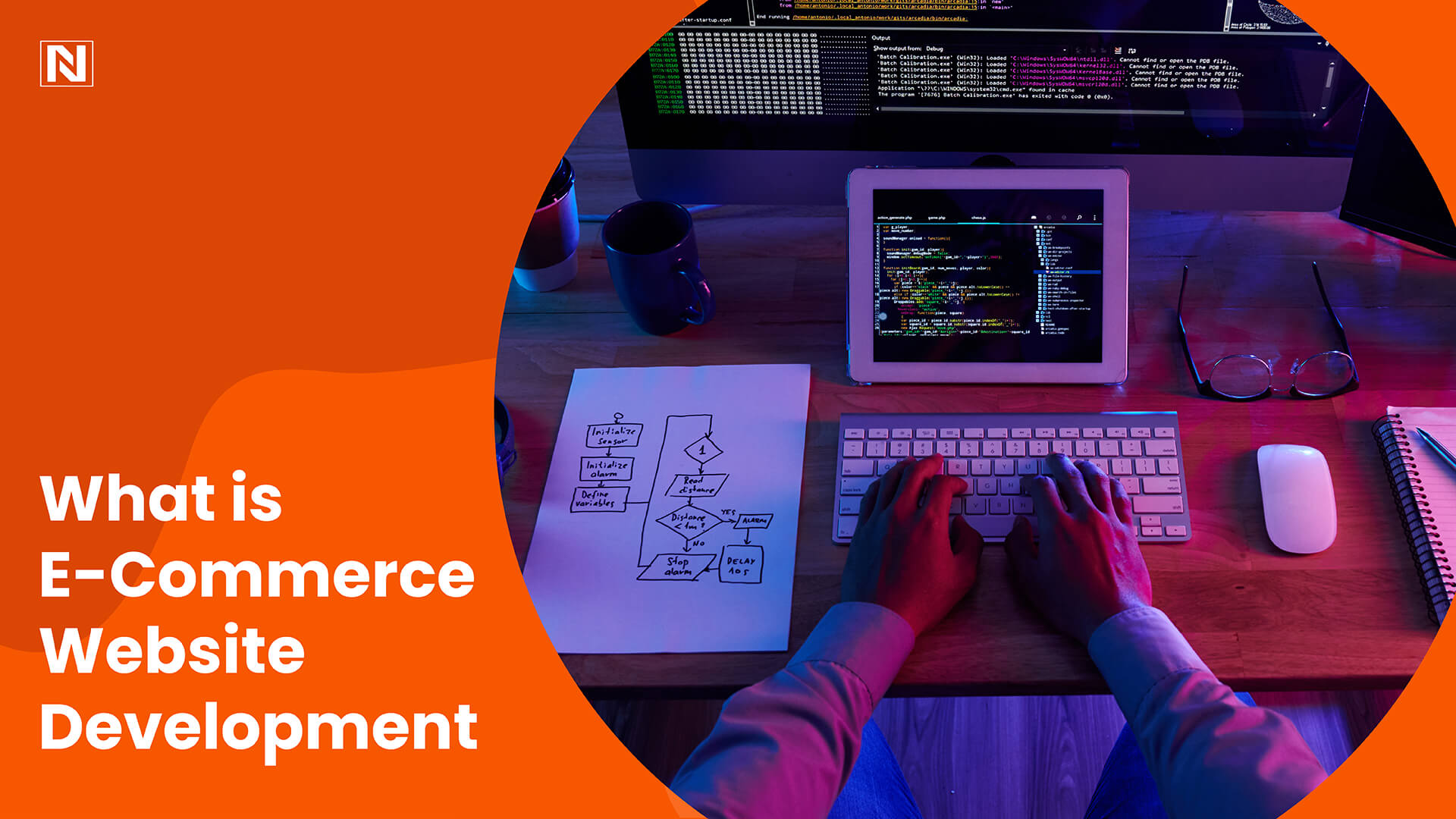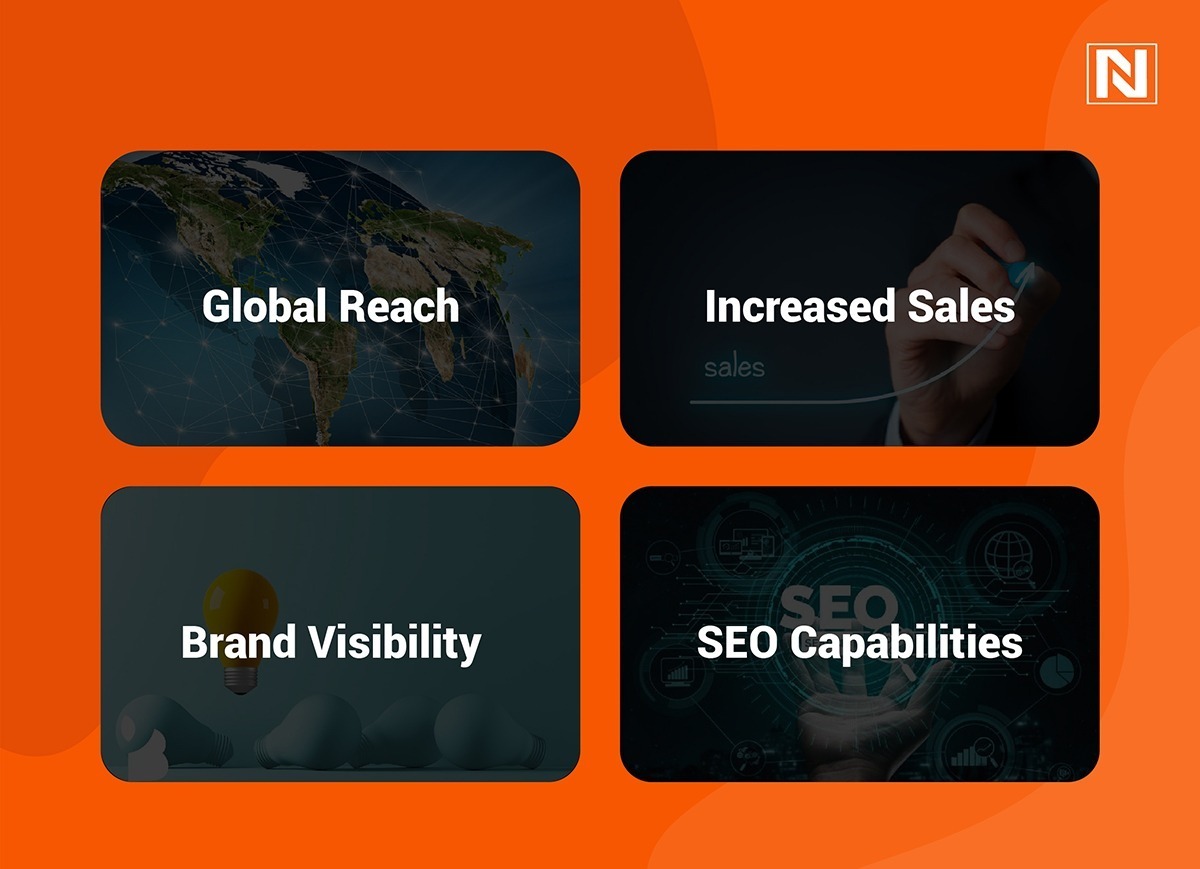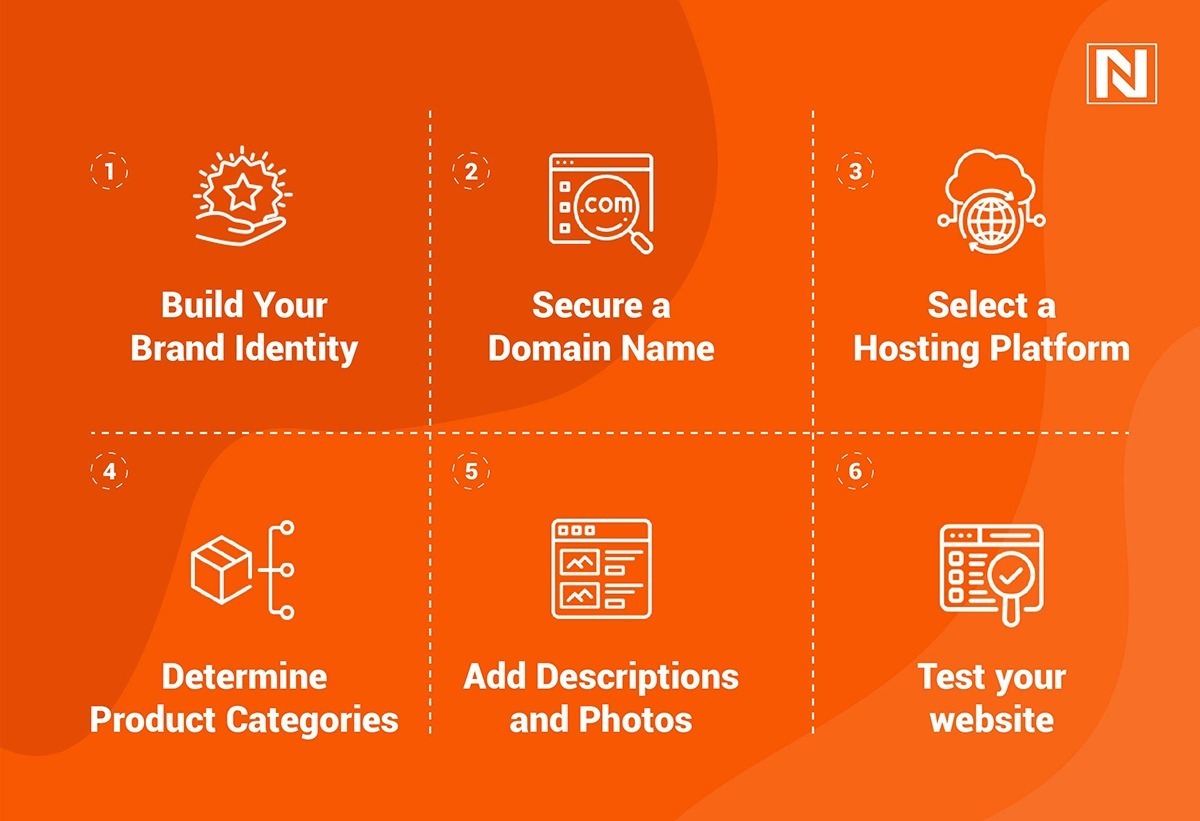
Over 2.14 billion people shop online, making e-commerce a powerful avenue for boosting your business’s revenue. To tap into this potential, creating an e-commerce website is crucial.
With around 24 million e-commerce sites in existence, strong web development is key to ensuring your site shines among the competition.
What does e-commerce website development entail, and how can you build a successful online store that delivers measurable outcomes? We’ll explore these questions and more in this article, so keep reading to learn how!
What is E-commerce Website Development?
E-commerce website development serves as the essential link between businesses and consumers in the realm of online shopping. It brings together the strategies, technologies, and best practices needed to turn a business idea into a functional online store.
Every aspect, from the design of the website to the overall user experience, is meticulously crafted to enable easy product discovery, evaluation, and purchasing, ensuring that customers not only find what they need but also enjoy the entire shopping journey from browsing to buying.
Why is E-commerce Website Development Important?
Effective e-commerce web development is crucial for building a solid foundation for your business. It guarantees users can smoothly browse pages, locate their preferred products, and finalize purchases.
Here are additional reasons why investing in e-commerce web development is vital for your business:

- Global Reach
E-commerce web development allows businesses to transcend geographical limitations and reach a global audience. Unlike traditional brick-and-mortar stores, anyone with an internet connection can access an e-commerce website, no matter where they are.
This worldwide accessibility creates new market opportunities for businesses to attract and serve customers globally. By expanding beyond local boundaries, companies can significantly increase their customer base and tap into new revenue streams.
- Increased Sales
A well-designed e-commerce website plays a critical role in driving sales. It provides a platform where customers can easily browse products, compare prices, and make purchases with just a few clicks.
Features such as personalized recommendations, user reviews, and promotions can further enhance the shopping experience, encouraging customers to make more purchases.
- Brand Visibility
In the digital age, establishing a strong online presence is key to boosting brand visibility. E-commerce web development utilizes search engine optimization (SEO) strategies to improve your ranking in search engine results, making it easier for potential customers to find you. This increased visibility is essential for drawing in customers searching for products or services online.
Integrating e-commerce platforms with social media and other digital marketing channels enables businesses to expand their reach and enhance their market presence, promoting their brand and products to a broader audience.
- SEO Capabilities
E-commerce web development goes hand-in-hand with search engine optimization (SEO), which is critical for driving organic traffic to your site. A well-structured e-commerce platform allows for the implementation of SEO best practices, such as optimizing product pages, meta tags, descriptions, and URLs.
It supports the creation of high-quality content, like blogs and product guides, which can further boost search engine rankings. Enhancing your website’s visibility on search engines like Google boosts the likelihood of drawing in potential customers who are actively searching for products similar to yours.
Did You Know?
According to Forbes, the e-commerce sector is set to reach INR 4,416.68 billion by 2024, with a robust annual growth rate of 11.45% projected to elevate it to INR 7,591.94 billion by 2029. Additionally, UPI transactions surged to INR 125.94 trillion in 2022, with over 800 million users contributing to this milestone.
How to Develop an E-commerce Website
Creating a successful eCommerce website involves several key steps, ranging from defining your brand’s digital presence to the actual development of the site. 
Build Your Brand Identity
Establishing your brand in the e-commerce world involves several crucial decisions. First, identify whether your online business will operate as a business-to-business (B2B) or business-to-consumer (B2C) model.
Next, determine your target audience and customize your e-commerce project to suit their preferences, from the photography style to the level of detail in product descriptions. Finally, create a catchy and unique business name that effectively conveys your brand’s goals and values.
Secure a Domain Name
When choosing a name for your e-commerce business, it’s wise to consider domain name availability as well. Purchasing a domain is straightforward with platforms like Shopify, but popular domains can be snapped up quickly. If you find an available domain that aligns with your brand, it’s best to secure it promptly, even if you start with a short-term contract for a year or two.
A memorable and visually appealing URL can significantly boost traffic to your site and enhance brand recognition, so it’s a good idea to check domain availability before finalizing your company name.
Select a Hosting Platform
After acquiring your domain, the next step is to bring your website to life by selecting a hosting platform, ideally one that includes e-commerce capabilities. Hosting services vary, with some offering only basic hosting where you’ll need to design the site yourself, while others provide pre-designed, optimized templates for both desktop and mobile views. Select a hosting platform that aligns with your needs and enhances your e-commerce objectives.
Determine Product Categories
Effective e-commerce product categorization is crucial for a seamless shopping experience and can significantly impact your revenue. Well-organized and intuitive product categories not only help customers easily find what they’re looking for but also improve your store’s internal search functionality and overall SEO.
To reap these benefits, you need to implement product taxonomy. This involves understanding your products and creating a logical structure for presenting them to shoppers.
In addition to knowing your products’ attributes and values, it’s essential to understand your customers’ shopping behaviors. This insight allows you to categorize and display your products in a way that aligns with their expectations.
For example, product categorization begins with broad categories and drills down into more specific sub-categories. For instance, in a furniture store, a broad category might be based on the room, such as living room, bathroom, bedroom, kitchen, or home office. Within the living room category, you could have more specific sub-categories like sofas, rocking chairs, console tables, and coffee tables.
Add Descriptions and Photos
Online shopping poses a challenge for customers who can’t physically touch or smell products; and they can only see them. This means online retailers must get creative with product displays to give potential buyers a better sense of the items they’re interested in.
A simple yet effective way to address this is by using high-quality images. In the online marketplace, pixelated or blurry photos can give a poor impression of your product’s quality.
Use a quality camera, whether a DSLR or a high-end smartphone, to ensure your product photos are clear and appealing. Make the most of natural light to enhance the vibrancy of your images, and use a tripod to keep your shots consistent. Capture your products from multiple angles, including close-ups, and consider incorporating 360-degree spins to offer a comprehensive view.
Pay attention to the importance of product descriptions. They should focus on how the product meets the customer’s needs or interests rather than just listing features.
Test your website
Before launching your e-commerce site, conduct thorough testing. A website riddled with bugs or issues can harm your brand’s reputation and make it challenging to attract customers in the future.
Begin by addressing technical aspects such as site speed, responsiveness, and browser compatibility. Ideally, your e-commerce site should load within two seconds. If it takes longer, you risk a higher bounce rate. Use tools like Google’s PageSpeed Insights to measure your page load times and implement the suggested improvements to enhance performance.
Ensure your site is mobile-friendly, as 65% of e-commerce traffic comes from mobile devices. Verify that product images load correctly, text is legible, and buttons are large enough for easy tapping. Test your site across various browsers to confirm consistent functionality.
Finally, evaluate the user experience from a customer’s perspective. Test how effortlessly you can navigate the site, search for products, add items to the cart, and complete the checkout process. The journey should be seamless.
Remember: Utilize tools like Google’s PageSpeed Insights to pinpoint and address performance issues, ensuring a fast and smooth user experience.
Maintain your site
Your eCommerce website requires regular updates to showcase stock changes, new products, and ongoing promotions.
You might discover that the website design needs more essential features or needs adjustments based on customer feedback. Unlike physical stores, eCommerce sites can be easily modified with just a click.
Build Your Dream E-commerce Website with Nirvana Lab
At Nirvana Lab, we turn your e-commerce vision into reality. Our expert team specializes in crafting bespoke online stores that are not only visually stunning but also highly functional. From intuitive navigation to seamless checkout processes, we ensure every aspect of your site is optimized for user experience and conversion.
Leveraging the latest technologies and design trends, we create scalable and secure e-commerce platforms tailored to your unique business needs. Trust Nirvana Lab to build your dream e-commerce website and take your online presence to new heights.
Frequently Asked Questions
What is e-commerce website development?
It involves creating an online store that integrates design, technology, and user experience to facilitate easy product browsing, purchasing, and secure transactions, ensuring a smooth shopping journey for customers.
Why is investing in e-commerce web development important?
It is crucial as it allows global reach, increases sales through user-friendly interfaces, enhances brand visibility with SEO, and supports a seamless shopping experience, leading to higher customer satisfaction and revenue growth.
How can Nirvana Lab help me develop my e-commerce website?
Nirvana Lab specializes in creating bespoke e-commerce websites that are visually stunning and highly functional. They offer intuitive navigation, secure payment options, and seamless checkout processes, leveraging the latest technologies to build scalable and effective online stores tailored to your business needs.
How do I choose the right domain name for my e-commerce website?
Select a memorable domain name that aligns with your brand. Ensure it is available for registration, and consider securing it promptly to enhance your site’s traffic and brand recognition.
What are the key features to include in an e-commerce website development?
Key features include intuitive navigation, secure payment options, high-quality product images and descriptions, and a seamless checkout process. These elements enhance user experience and drive sales.
How often should I update my e-commerce website?
Regular updates are essential to reflect stock changes, introduce new products, and implement customer feedback. Frequent maintenance ensures your website remains current and functional, improving user engagement and satisfaction.